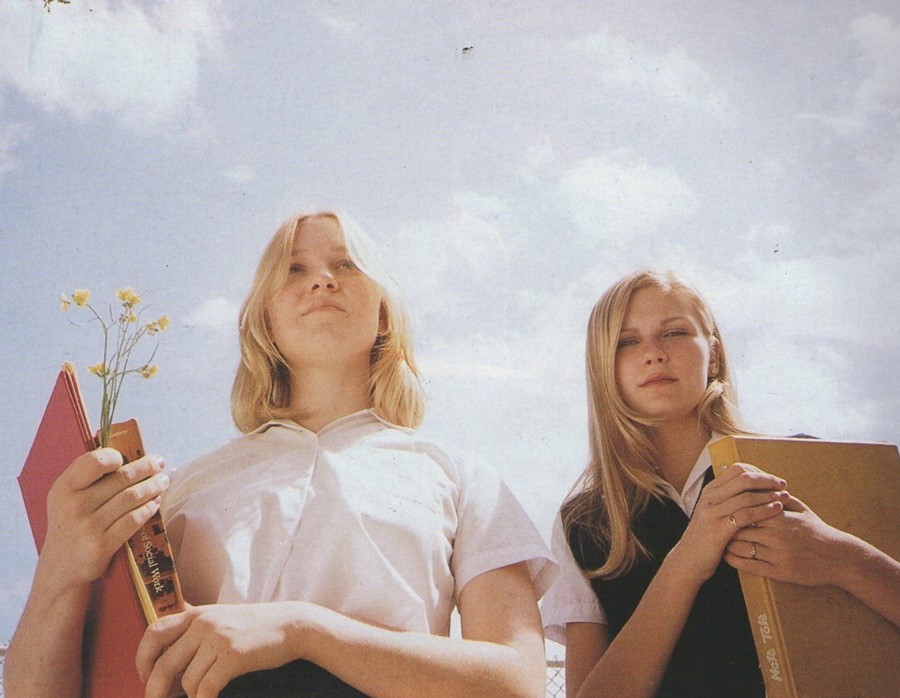AnOthermag.com’s book columnist, Ana Kinsella, on why the ‘not age-appropriate’ books we’re steered away from as teenagers are still the juiciest reads
If you, like me, were once a teenager who read a lot, you’ll understand the kind of book I’m about to talk about. It’s what some wary parents might call ‘not age-appropriate’. It’s definitely got some sex scenes. Probably some drugs, too. Maybe a breakdown. Its publication might have caused a controversy in the press. And by the time it got to your group of friends, it has itself quite the reputation.
At school my friends and I loved these books. They got passed around our group like contraband cigarettes. It was a thrill to be handed the book at the back of a classroom one day, and then each following lunchtime report on where you’d gotten to. It wasn’t, I should say, that the books were titillating for us. It wasn’t about the explicit scenes or graphic details of sex, drugs and misery. (For one thing, I think teenagers are probably bombarded with enough of that outside of books.) It was something beyond all that that made us feel like a part of a different world.
There was White Oleander by Janet Fitch, an Oprah Book Club-certified page turner about a young girl whose artist mother goes to jail for murder, leaving her daughter in the foster care system in Los Angeles. It was – how should I put this? – an absolute smash hit for our group of friends. It did have some dirty bits, which we poured over not as a source of titillation but as something to discuss between us – was the sex on page 344 consensual, or not? And why did the character make the decisions she made in Chapter 14? It made me feel like I had tapped into a complicated world beyond my own boring routine where even small decisions carried weight. I probably reread it four times.
“TV and movies and music and celebrity magazines gave us skewed depictions of sex and excess, and books allowed us to situate these things in real terms. They felt illicit, sure, but they also felt revelatory”
There was A Million Little Pieces by James Frey, a harrowing drug memoir later found to be fabricated, which set off my passion for the down-and-out addiction memoir. Donna Tartt’s The Secret History is a campus novel that descends literally into bacchanal, and reading it set my own expectations for the university experience unforgivably high. The Virgin Suicides showed me a glimpse into a dangerous realm of girlhood, and gave me an early taste of the deafening power of the male gaze. If you were boringly well behaved (not entirely unlike teenage me), books like these could have felt like cautionary tales: stories that show you where the lines are and what actually happens if you stray outside them. But I think we used to read them to gain access to some new level of knowledge. TV and movies and music and celebrity magazines gave us skewed depictions of sex and excess, and books allowed us to situate these things in real terms. They felt illicit, sure, but they also felt revelatory.
Later I would graduate onto the harder stuff, but found the big male blockbusters, the likes of American Psycho and Junky and Lolita, lacking. They felt like narratives that were crafted from violence and sex for the sake of it, rather than to tell us some grand truth of life itself. And of course, it’s hard to relate to a female character whose only role in a story is to be murdered or discarded.
Years later, I’m still looking for the thrill of the illicit book – something so riveting it feels wrong. Sometimes they can feel few and far between, like the publishing industry is more interested in playing it safe. Often when they arrive, these books bring with them moral outrage, newspaper columns and tweets about their content that seem to miss the point. The point is never just the sex or the violence. It isn’t what those things say about society. It might be more about how reading those things can make us really feel about ourselves and our own lives.
Recently the book that hit the thrilling sweet spot was the forthcoming Three Women by Lisa Taddeo, a stunning work of non-fiction born from eight years of serious reporting. It follows the sexual lives of three separate women in America. All of life is in this book: small cruelties and big injustices, heartbreak and triumph and loneliness and pain and joy. Reading it I felt a deep yearning to pick up the phone and text my school friends to see what page they were on, and when I finished it, I wanted a debrief session with every female reader I knew, so we could dissect it at the length it deserves. It wasn’t the sex on the page that gripped me, but the intimacy, the honesty and the pain that can accompany those things, in text as in reality. To see life’s most complicated aspects rendered so clearly in prose is to feel, in a way, less alone.
Three novels that feel like contraband
Veronica by Mary Gaitskill – female friendship after the glitter fades for a former model and her friend Veronica, an older woman who lives with Aids. The glamour of 1980s New York gives way to something sadder and maybe more serious.
In the Cut by Susanna Moore – a dark and disturbing erotic thriller about Frannie, who lives alone in Greenwich Village while a serial killer prowls through the city.
Drinking: A Love Story by Caroline Knapp – an alcoholism memoir, yes, but one that dazzles with its descriptions of the author’s inner life and the allure that drink held for her over 20 years.
